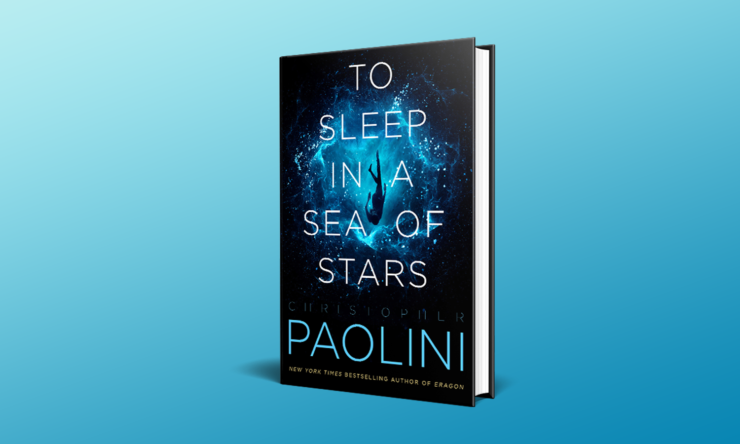When Eragon (and I promise, this review isn’t secretly an Eragon retrospective) released in 2002, I picked it up with deep interest and excitement. By the end of middle school, four friends and myself were obsessed. We started writing our own stories of dragons and eggs, mysterious elves, orcan languages, and flight. We passed notebooks of our handwritten epics around in class the way other kids passed notes of gossip. The four of us even wrote Christopher Paolini fanmail, and he responded with notes of his own—to be fair, I’m still unsure if that was actually him answering his mail or if it was just an adult feeling really bad for us. Paolini, if you’re reading this, do you remember fanmail from a gaggle of young Iowan teens? Did you send them replies? Inquiring minds must know.
Anyway, up until that point, I had been reading fantasy passed down to me: Narnia, Belgariad, and more were stories suggested, placed in my hands. I devoured them, but I never felt like they were my stories to share with others. The Eragon series was the first time I had chosen a fantasy story to read that was just mine.
It came out, it seemed, for me and only me. It was a story I discovered and shared with my parents, not the other way around, and that sense of ownership left me empowered to choose book after book to read. By the time Inheritance came out in 2011, I was in college, and I made friends with people who, like me, couldn’t wait to see how the series ended. I’m even in the wedding party for one of the friends who read the last book of the Inheritance Cycle with me.
I didn’t realize how influential Christopher Paolini was on me as a young writer until I started getting ready to read To Sleep in a Sea of Stars. Now I realize I’ve always had a soft spot for Christopher Paolini, so I definitely anticipated this jump from a Young Adult dragon fantasy to adult science fiction epic.
It delivered.
Buy the Book


To Sleep in a Sea of Stars
Xenobiologist Kira Navárez spent her whole life dreaming of discovering new worlds, and it was near perfect. Newly engaged with her life planned out, everything seems set. Then one day, she makes a huge discovery during a routine survey mission on an uncolonized planet: alien relics.
Delight turns into horror when the ancient dust arounds her begins to move and completely changes her life. Disaster upends everything she’s ever known, and Kira is thrust into a war that spans the entire galaxy. As Kira grapples with her humanity and these newfound responsibilities, knowing full well civilization’s survival may rest on her shoulders, she travels, fights, and soars across the stars. Kira may be humanity’s last hope, and she isn’t sure she can withstand her own personal horrors to live up to the task.
This 800+ page epic took Paolini over nine years to write, and it shows. To Sleep in a Sea of Stars is fleshed out in ways I didn’t think possible. The world Paolini has built is tangibly real. I believe his universe, and I believe his characters. What’s even more delightful is how quirky his new world is. Some aspects of the universe are eccentric, and I am here for it. Once I reached part two and met the colorful crew of The Wallfish, I was sold. This book created a world where a spaceship has a cat named Mr. Fuzzypants (a perfect name, I will not take any critiques at this time) and a pig named Runcible. I will be forever grateful. There are ship pets and puns and a fantastically off-center ship mind named Gregorovitch, who speaks in riddles that only he truly seems to understand.
One of the things that truly centers Paolini’s work is how completely human the, well, humans are. Kira learns that one of the alien species she’s dealing with have been called “Jellies,” and I cannot imagine a more human name. Another group of settlers on the planet Shin-Zar gene-hacked themselves to survive the high-g environment. There is a giant painting of the ship pig and the ship cat, who is holding a flamethrower, that decorates The Wallfish—also, to any reader who can draw, I demand fanart of this painting. Please. Despite this story starting in the year 2257, the humanity in this story is optimistic and it’s recognizable. Whether it’s a group of miners calling themselves The Screaming Clans, a ship called Extenuating Circumstances, a (possible) cult worshipping numbers, or the news anchors filling in time with non-stories, every aspect of humanity is visible, raw, and familiar.
I also could not get over the dialogue between characters. The quips and relationships are natural. Paolini’s ability to create believable characters, including our walking disaster of a lead, Kira, has become something else in his time since Eragon. I found myself laughing at the puns and staying for the connections between characters.
I knew I would enjoy To Sleep in a Sea of Stars, but I didn’t know I would fall in love with it. There may not be dragons, but there are space squids, and that’s enough for me.
To Sleep in a Sea of Stars is available from Tor Books.
Read an extended excerpt here.
Cassie Schulz is the Events Assistant for Brazos Bookstore. You can find her on Twitter @kerfufflepuff where she tweets about books, musicals, and cats. You can also find her on Instagram, co-managing the page @tag.ur.lit with a fellow queer disaster who loves YA Lit as much as she does.










